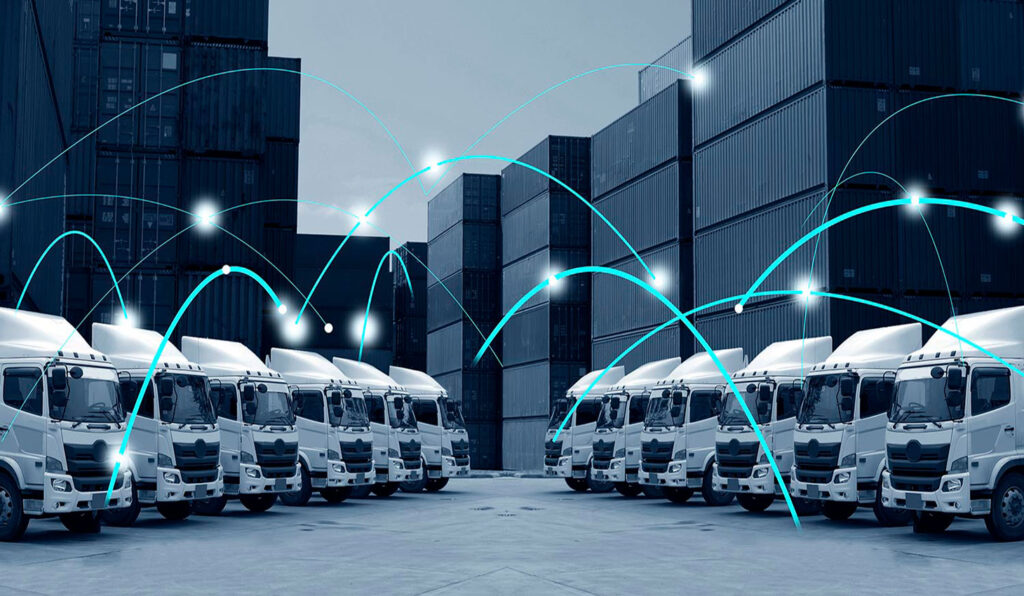Once a niche offering, telematics is quickly becoming a more mainstream reality. This interdisciplinary field is the convergence of telecommunications and information processing. In the realm of vehicular technologies, it’s driving innovations in terms of transportation, road safety, wireless vehicle communications, comprehensive tracking capabilities, and more.
And it isn’t just consumers who are enjoying improved connectivity and intelligence in their vehicles. These burgeoning technologies are creating new opportunities for commercial drivers and businesses that work with fleets—including trucking and taxi, to rental, delivery, and more. Helping to improve business processes and outcomes, these technologies are offering serious competitive advantages.
Whether fleet-dependent businesses are moving products or people, telematics is empowering them to improve the management of their vehicles to create efficiencies, increase their bottom line, and improve safety and overall customer satisfaction.
Telematics is also enabling fleet managers to perform better planning, which ultimately leads to better cost and business management.
How telematics is transforming fleet cost management
Fleet managers are currently using telematics in a number of ways to regulate their operational costs, as well as to gain visibility and control. And the data generated with IoT devices and telematics is enabling them to create more granular fleet management plans that guide their businesses toward specific goals and objectives.
1. Racing past GPS location tracking
For example, while GPS systems used to simply relay information regarding a vehicle’s global coordinates, these devices can now pair with other vehicle components to track routes, fuel usage, tire pressure, and more. Fleet managers have the ability to access and analyze the resulting data to plan the most efficient routes, regulate fuel consumption, and ensure their vehicles are properly maintained and in good working order. All of this contributes to time and cost savings, and can lead to increased productivity.
2. Decreasing insurance costs
Insurance is another area where telematics is benefiting fleet cost management. Shopping around for better premiums used to be the only way to find savings with regard to insuring fleet vehicles. And while driver behavior in terms of incidents and accidents logged has always had an effect on premiums, telematics is enabling insurers to offer deeper rate adjustments based on information gained through both GPS tracking and daily driving habits. In fact, fleet insurance costs can be reduced by as much as 15 percent for using tracking devices.
Toronto-based car insurance provider Onlia for example offers drivers incentives for distraction-free driving. It’s app—Onlia Sense—studies users driving habits, provides areas for improvement, and engages users in safe-driving challenges that can earn them rewards.
3. Managing costs and cash flow
By using telematics technologies to better manage fleet costs, businesses are gaining greater control of their cash flow situations while simultaneously initiating new capital preservation techniques for their businesses.
Better cash flow management and capital preservation have the added benefit of reducing or eliminating business risks associated with cash flow concerns. Freeing up additional capital from previous inefficiencies creates a surplus of cash that can be reinvested into the business to support scaling efforts.
4. Supporting flexible billing
Telematics can also be used to better monetize fleet-dependent businesses. In addition to tracking mileage, gas consumption, and time spent driving, IoT devices can be used to capture the use of special tools and services that are billed as one-time charges.
For example, Fair is a subscription car service app that enables its customers to have the use of a car without the commitment of buying or even leasing. While customers pay a recurring monthly fee to use the service, they’re also charged a start payment each time they decide to switch to a different vehicle. In connection with a dynamic automated billing system, these charges can be added easily to a customer’s existing recurring charge.
The growth of SaaS in the automotive industry
Financing flexibility is becoming increasingly important for businesses involved in fleet management. Many businesses no longer want to invest large sums of money into products and services that will become obsolete. They’d rather subscribe to a service and continually enjoy the latest iteration. Therefore, SaaS businesses and the flexibility they offer are of growing importance and are gaining penetration in the automotive industry.
Consider ClearPathGPS—a B2B SaaS business that targets small and medium-sized truck and transport delivery companies. Its customers subscribe to its GPS tracking system, which is capable of tracking vehicle locations down to 30-second time intervals. Therefore, instead of offering contracts, ClearPathGPS prorates its subscriptions each day, which can mean hundreds of plan adjustments daily.
With such highly customized and high-volume billing requirements, the business quickly understood it required a platform capable of managing its billing. Since implementing subscription billing software, ClearPathGPS has been able to successfully automate the management of its complex billing cycles.
Stax Bill’s feature-rich platform has given us a powerful way to seamlessly manage our entire subscription business from billing to account management. Stax Bill is the Swiss Army knife of billing.”
Chris Fowler, CoFounder and CEO, ClearPathGPS
As a result, its team members are able to focus more of their effort on the business’s core strategy and execution.
Additionally, they now have the flexibility to structure payment plans for their customers however they like within the software, and can view and track their revenue in real-time. This is crucial as it enables them to make changes as and when needed without delay.
Making the leap into telematics
By all indications, the telematics market is expanding and transforming the transportation industry. And as this movement continues, the technologies and their benefits—including improvements in compliance, safety, driver efficiency and fleet performance—will become even more evident, as many of their advantages are closely tied to their adoption rate.
More connected vehicles will result in more connected data, which in turn builds a bigger picture with greater insight that will benefit businesses tapped into telematics.
Fleet telematics will continue to grow alongside the continual development of new apps, as well as the growing number of GPS units and wide-spread smartphone usage.
The growth of fleet telematics will also be determined by fleet managers and their future requirements with regard to cost cutting, meeting monetization challenges in telematics, increasing productivity, and improving accountability.
Managing a fleet is getting more expensive every day, while performance expectations continue to rise. Higher fleet-management costs ultimately mean less money and fewer resources are available to allocate toward investments that aren’t necessarily viewed as a priority, such as advanced technologies and new systems.
However, by taking advantage of new telematics technology integrated with agile monetization systems, fleet managers have the opportunity to save their businesses time and money, and gain an edge on competitors by enhancing the productivity of their fleets.
While it may seem like an intimidating leap, selecting the right fleet automation workflow supplier can prepare fleet management teams to move into the advantageous world of telematics.
There are a number of suppliers and fleet management solutions available, but businesses should ensure they select a supplier that really understands their business and can help make insightful recommendations on solutions that will truly benefit them.
Businesses should also ensure they select a supplier that offers solutions that will integrate seamlessly with their existing systems and effectively automate their fleet-related monetization and billing processes.
As telematics adoption rates rise, making the move is becoming an imperative that will no doubt pay for itself.








